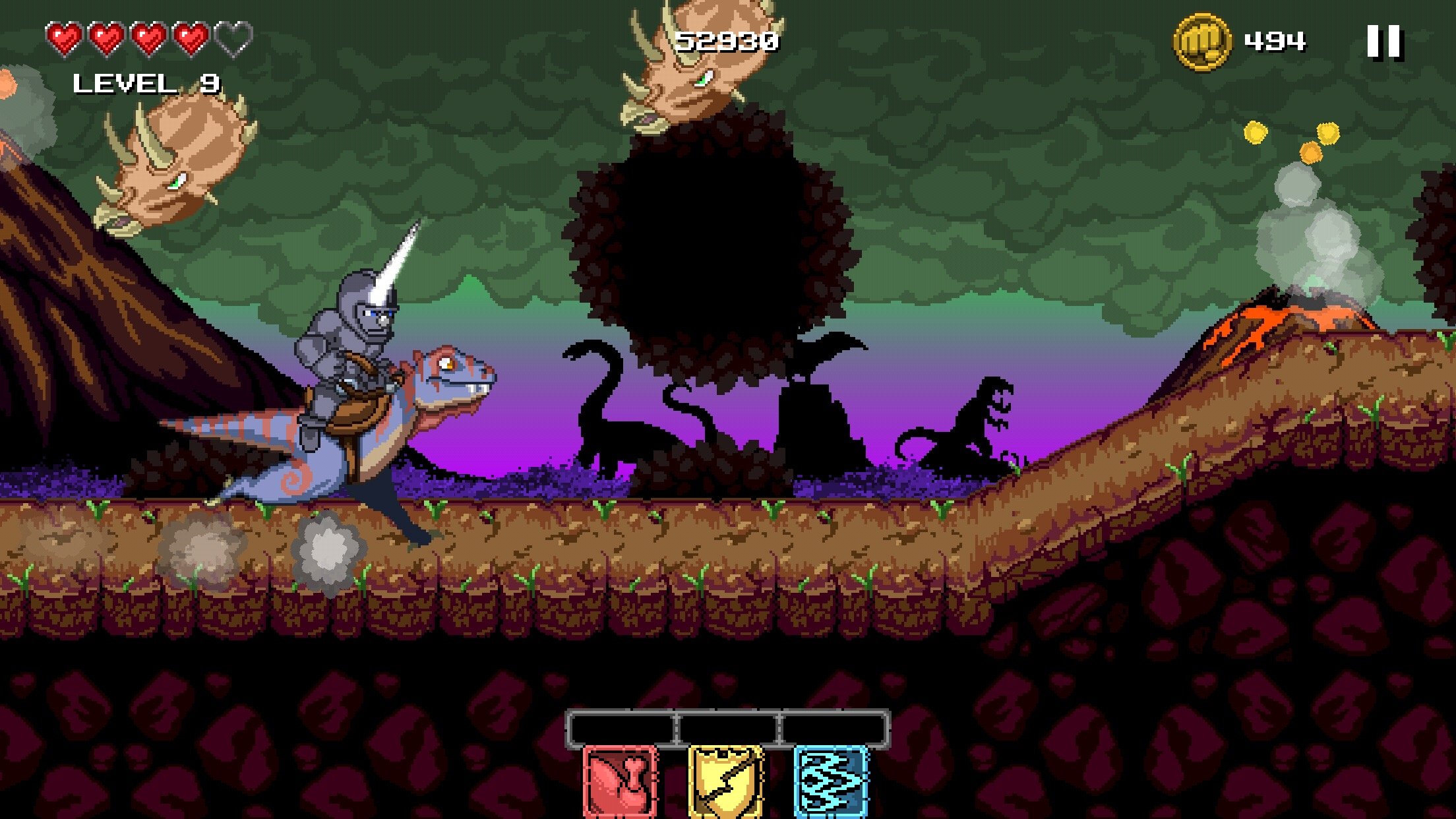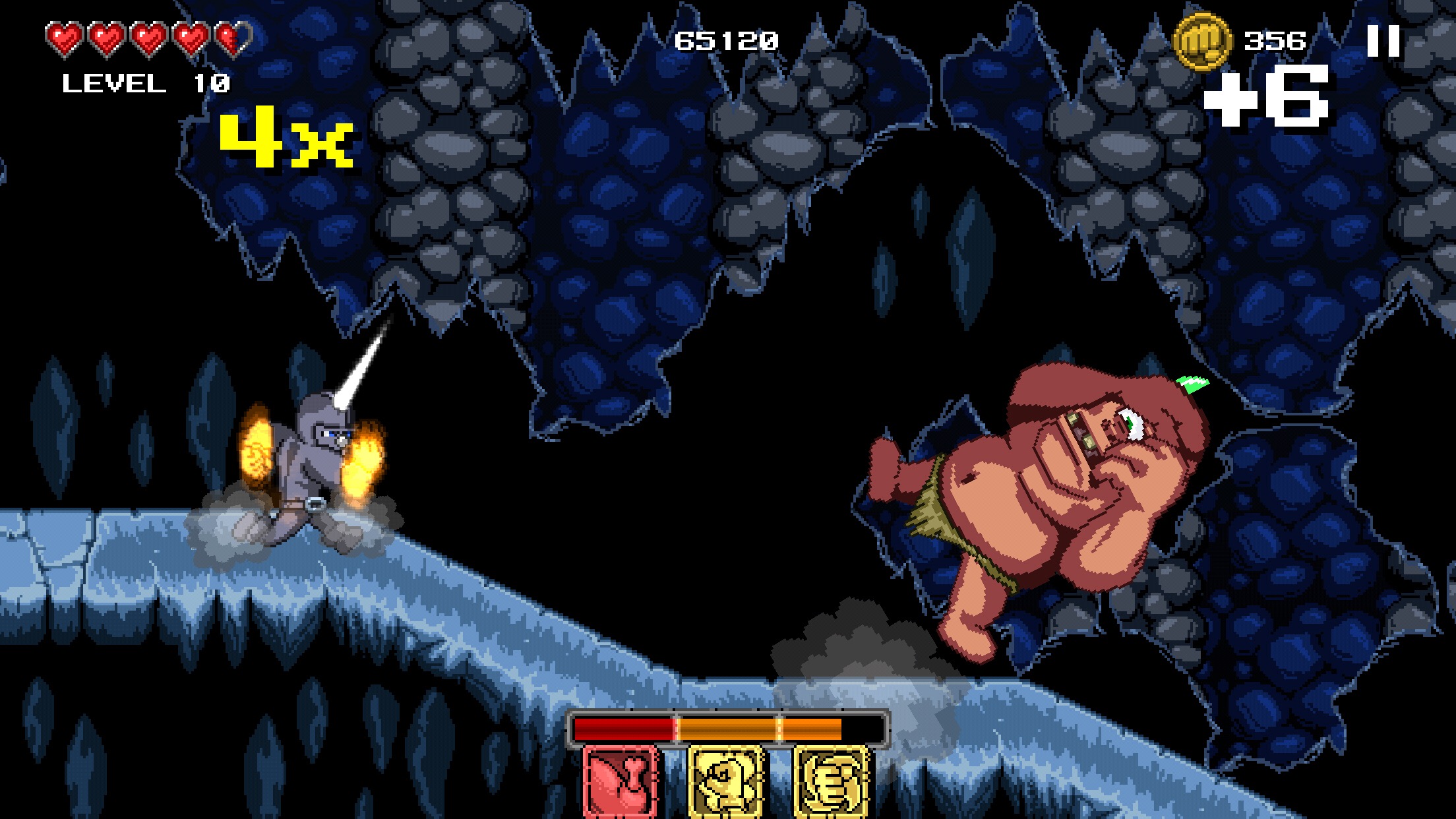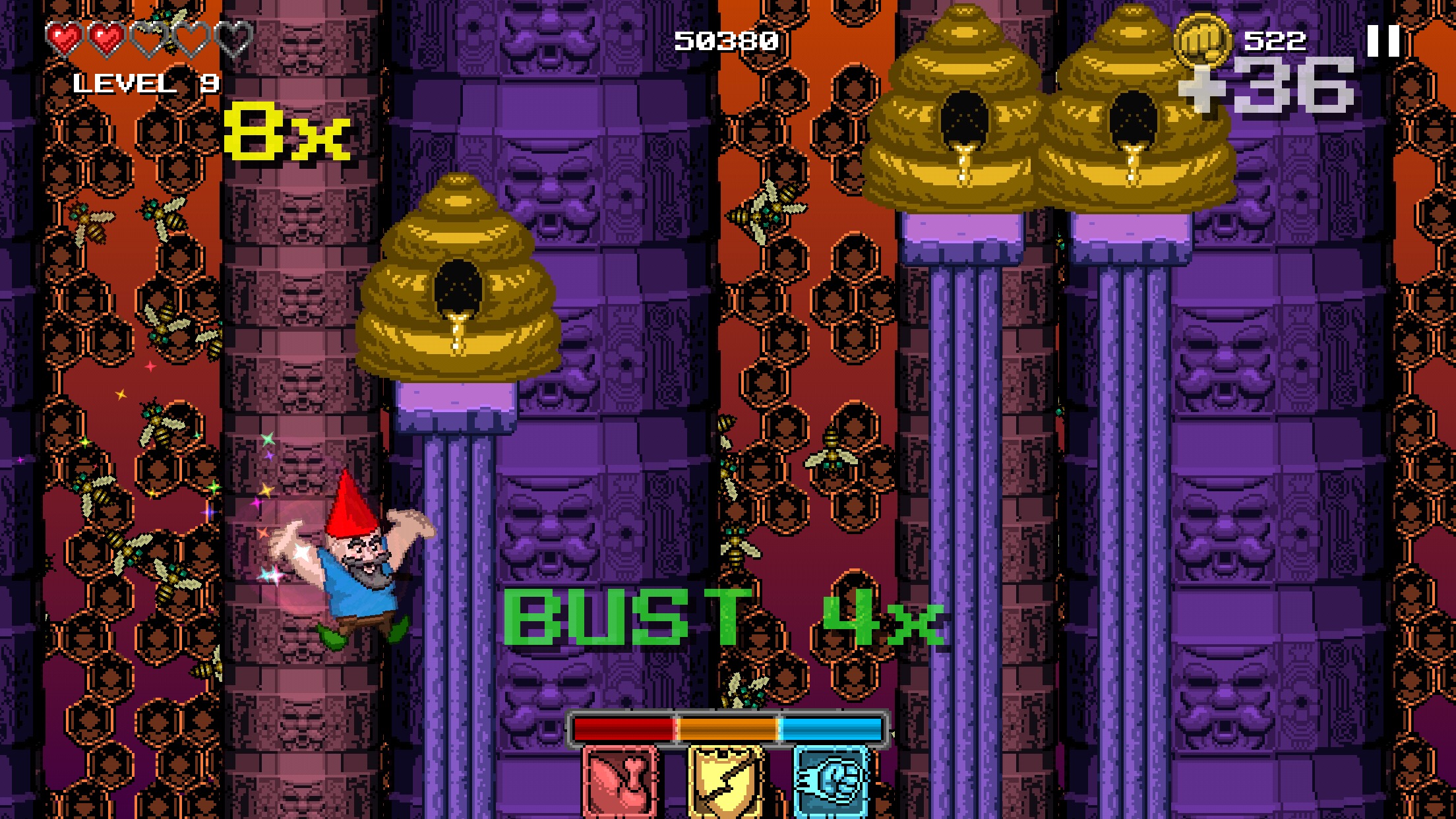 Hello, gentle readers, and welcome to the Classic Reload, the regular feature where the ghostly apparition of Blake haunts us at every turn. In this feature, we take a look at games from the App Store’s past to see how they hold up in the harsh, post-apocalyptic wastelands of 2017. It’s a chance to revisit old favorites, reflect on their place in the overall library, or simply to take a deeper dive than our reviews typically allow. As the three-time winner of the prestigious Some Pig Award, I try to choose a balanced selection of games, but if you have a suggestion, I’m all ears. You can comment below with the games you’d like to see featured and I’ll add them to the master list for future consideration.
Hello, gentle readers, and welcome to the Classic Reload, the regular feature where the ghostly apparition of Blake haunts us at every turn. In this feature, we take a look at games from the App Store’s past to see how they hold up in the harsh, post-apocalyptic wastelands of 2017. It’s a chance to revisit old favorites, reflect on their place in the overall library, or simply to take a deeper dive than our reviews typically allow. As the three-time winner of the prestigious Some Pig Award, I try to choose a balanced selection of games, but if you have a suggestion, I’m all ears. You can comment below with the games you’d like to see featured and I’ll add them to the master list for future consideration.
I’ve mentioned before how I was a relative latecomer to the iOS gaming scene. My first device was an iPhone 4, and I got it several months after its launch, in July of 2011. Yes, sweet summer child that I was, I bought an iPhone only a couple of months before the next model was arriving. That first year or so, I rarely stepped outside of the familiar. Square Enix games, Cave’s shooters, Kemco RPGs, and PopCap ports were my staples, along with the occasional “familiar" game from Gameloft like Spider-Man: Total Mayhem. To the extent that I engaged in iOS exclusives, it was only through the games that managed to pop through the bubble of the traditional gaming media. I came to TouchArcade in the summer of 2012 through Tiny Tower and soon became a regular reader of the site, grabbing the occasional unknown game when it was recommended with sufficient strength.
One game that TouchArcade really got into in the back half of 2012 was Punch Quest (Free). Created by Rocketcat Games and Madgarden, it’s a wild take on the endless runner genre that was dominating the scene at the time. I picked it up soon after its launch during the brief window when it wasn’t free and found myself completely enthralled by its surprising depth, madcap goofiness, and great customization. Today in 2017, it’s one of only a few endless runners I’ve actually kept on my iOS device without fail. Since it recently got an update that ensures it will live past September, I thought it would be an opportune time to talk about this terrific game.
As Punch Quest was heavily covered at this site, I’m not going to spend as much time talking about its history. There’s even an episode of the TouchArcade Podcast where Kepa Auwae from Rocketcat and Paul “Madgarden" Pridham discuss the game. Rocketcat was coming off of the rather large action-RPG project that was Mage Gauntlet (Free), which had released in 2011. Madgarden had been knee-deep in Sword of Fargoal stuff, a quagmire I’m not going to get into here. The two of them came together and decided to work on a runner game that was inspired by accessible yet deep fighting games like Street Fighter 2. They also drew inspiration from what was presumably a fan-made Kunio-Kun game they spotted on SomethingAwful where you had to try to keep a ball in the air as long as possible.
Now, this was the first time either of them had designed a game from the ground up as a free-to-play release, and perhaps predictably, they didn’t quite get things right off the hop. The game’s sole means of bringing in income was through a non-obvious option to purchase Punchos, the primary currency used for unlocking skills and hats. Unfortunately, the initial version of the game was a bit too generous in terms of pricing those unlocks. Players could easily get everything they wanted simply by spending the Punchos they earned by playing the game normally. After just a couple of weeks, it was clear that the game’s monetization needed a re-think. While they tried to sort things out, the game was temporarily made a paid app. They eventually settled on increasing the prices of everything dramatically and boosting the amount of Punchos you would get with IAP purchases, among other tweaks. Punch Quest went back to being a free app and, according to Auwae, became a steady financial success.
While the genre has slowed down a lot over the years, there’s certainly no shortage of quality games in the auto-runner genre on iOS. Even the mediocre ones have a certain enjoyment to them. That makes it that much harder for one to stand out, and when one does, it’s worth looking at how it does that. Punch Quest follows the basic rules of the genre, the 2D variety in particular. Your character charges forward along a procedurally-generated and ultimately fatal path that gets more difficult the longer you survive. Every play starts from the beginning, but by collecting currency, you can upgrade your character to give them a better chance of survival. You can also spend that currency on one-time boosts if that’s your preference. Due to the difficulty and speed of these games, the player must concentrate very intently, as even the slightest distraction can quickly end the round.
There are, then, two major components that these games have to do well in order to succeed. The gameplay needs to be fun and exciting in the moment, purely entertaining on its own merits, even if only in short bursts. There also needs to be a satisfying meta-game of unlocking things or improving the character. This gives value to the currency (thus making it a desirable thing to collect and a useful design element), gives the player a sense of progress even if they aren’t actually getting much better, and adds an aspect of investment into the game to keep players from discarding it in the event that the essential mechanics start to get dull. If both of these things are done well, they will support each other and create an incredibly satisfying all-around experience.
With regards to the meta-game, Punch Quest takes an interesting route that is somewhat familiar but also quite different. The basic set of moves and upgrades doesn’t take terribly long to open up, so the player will quickly hit the point where their character doesn’t seem to be getting any stronger. After that, it takes a very long time to hit the next tangible upgrade, which comes in when you start earning Ultra gear that lets you stack on more moves than you would normally be allowed. In the interim, Punch Quest relies more on cosmetic unlockables to keep players engaged. It’s a proven method that works particularly well here since you have so many customization options to begin with. For example, upon getting a shiny horn hat, I was able to fashion the lovely Rhino-looking character you can see in the screenshots in this article. He seeks enough Punchos to make a solid Puncho statue of himself, nothing more.
The interesting thing about the skills that you unlock is that you really have to choose carefully which ones you’re going to equip. They’re fairly well-balanced, so it’s rarely about choosing the best ones so much as it is choosing what’s best for your play style. You get to pick one skill from two different categories, along with your special move. Some combinations certainly work better than others, of course, and you’ll also need to consider any quests that you need to fulfill using certain abilities. This is what makes the Ultra gear so great. When you can normally only bring two moves with you, having one extra one feels almost like cheating. There are also permanent upgrades, and the last few in particular open up a totally new thing to worry about while you play. You can gain the ability to take an extra hit that knocks off your hat. Then, you can get an upgrade that gives you an instant special move when the hat comes off. The final upgrade lets you get your hat back if you can put together a sufficiently-lengthy combo. If you’re good, you can use this to keep playing for a long, long time.
As any good meta-game should be, Punch Quest‘s system of upgrades and unlockables is strongly tied-in with the gameplay itself. Simply put, the more you unlock, the more flexible the game is, making it easier to find a style that’s fun for you. Not many auto-runners have that kind of depth to them, and it’s probably what Punch Quest does best. The basic rules are simple enough. Don’t get hit too many times. Complete your quests as best as you can. Try to chain together bigger combos. Earn as many Punchos as possible. You have a few different input options, and how exactly they work will depend on the skills you’ve selected. By default, tapping the left side of the screen will cause your character to do a leaping uppercut, with a second press causing him to slam down to the ground. Tapping the right side of the screen does a dashing punch. You can use this to pick up speed or just to increase your hang time a little in mid-air. Hitting both sides at once causes your character to stop and guard.
There are times where you’re going to have to go high or low whether you like it or not, but generally it’s up to you whether you want to focus more on aerial opponents or the baddies on the ground. Indeed, part of the thing you need to think about when choosing skills is which enemies you expect to cause problems. If you’re sticking to the ground a lot, you might want that shield-breaker skill to help you deal with orcs. On the other hand, if you want to focus on the flying goons, you might want the skill that lets you uppercut higher. You also need to think about how you’re going to keep your combo going. Knocking down torches can help with that, and that’s easier with the Power Slam skill, so maybe you want that. Or perhaps you want an ability that allows you to hit more enemies at once to reduce the risk of a combo-ending attack while you’re taking care of one of them. Should you jump the orc and put yourself in reach of a bat? Can you take out the exploding zombie in time or should you just try to put some distance between the two of you? These are just the moment-to-moment decisions you need to make.
Even if there were nothing else to it than that, Punch Quest would fare quite well. You never quite know how the enemies are going to come at you, and each set requires a different series of actions in order to make an efficient, safe combo. But Punch Quest goes beyond that by providing an excellent amount of variety in the stages while giving the player a little welcome agency in the route ahead. At various points, the path will branch. Signs will indicate what you can generally expect along each route, even if they’re a bit vague. Do you want to fight a boss, or would you rather go after some treasures? You can take a fighting route and hope to beef up your combo, or go for a dangerous path that has a nice reward waiting at the end.
The best of these events are the eggs, which send you off on one of three mini-games. In one, you play as a gnome, cartwheeling its way through bees and beehives. Another one sees you riding on the back of a dinosaur that can shoot lasers from its mouth, stomping through prehistoric terrain and fighting off falling rocks and triceratops heads. In another mini-game that was added post-launch, you play as a goaticorn in a silly parody of Robot Unicorn Attack. You won’t take damage to your health meter in these mini-games, but a single hit will send you back to the normal stage. They’re a great way to boost your experience and Punchos. They also provide a welcome bit of variety to break up the usual action. Not hidden in the eggs but equally weird are the hallucinogenic sequences that occur after you eat certain types of food. You’ll have to fight off some very strange looking phantoms while your character gets their bearings back. There are other secret events you can stumble on, but it’s best to leave most of that stuff as a surprise, I think.
All of this adds up to an enjoyable, challenging, and often surprising take on a genre that just about any mobile gamer is probably sick to death of. There’s a lot of depth to the gameplay beyond simple reflex, and I think that’s why I love it so much. Regular readers know that I’m a sucker for games that allow me to play in a number of different ways, and this is one of the few runners that truly accommodates that kind of approach. Toss in some awesome visuals, some beefy sound effects, and a bit of weird 70s surfer-movie music, and you’ve got an all-time keeper. I haven’t even talked about the Spartan Mode, an alternate gameplay mode that you can unlock with a certain amount of Punchos. That mode sprinkles in some roguelite-style elements, forcing you to randomly find skills as you play rather than choosing them ahead of time. You never know quite what you’re going to get, making it the perfect choice for seasoned Punch Quest players.
Punch Quest had gone a couple of years without an update until very recently. Both developers were busy on projects such as Death Road to Canada ($14.99), and it wasn’t broken or anything. With the upcoming shift away from 32-bit compatibility, it’s do or die time for a lot of apps when it comes to updates. Fortunately, it seems that Punch Quest will live to see another year. Even more exciting is that the notes for the latest update promise more things to come. New content for Punch Quest in the year 2017? I can only dream. In all likelihood, it will just be the Apple TV support that Auwae has talked about before, but I’m still going to hope anyway.
That’s my take on Punch Quest. What do you all think? Am I on to something here or am I just punch drunk? I want to know, so please leave your comments below with your thoughts. A reminder that the Final Fantasy 5 RPG Reload Play-Along is still going on through the month of July, so stop on by the thread and join in. As for me, I’ll be back next week with the first part of our look into the history of action-RPGs. Sounds like a controversial good time! Thanks for reading!
Next Week’s Reload: The Early History of Action-RPGs






